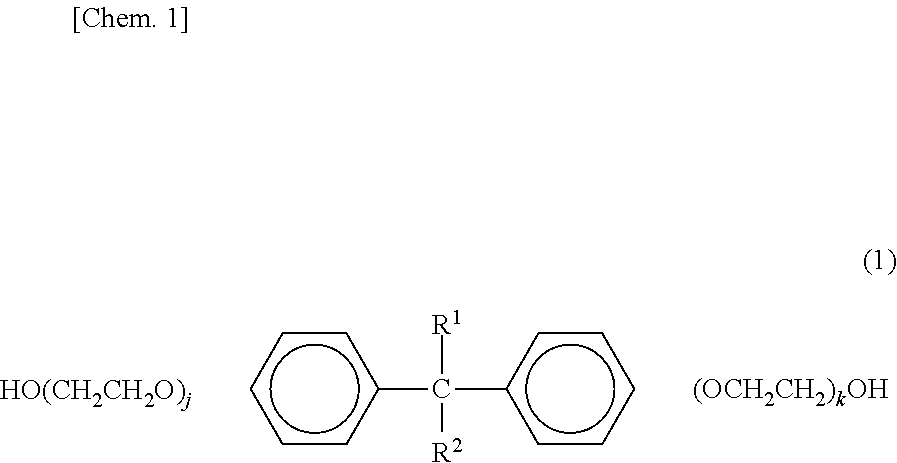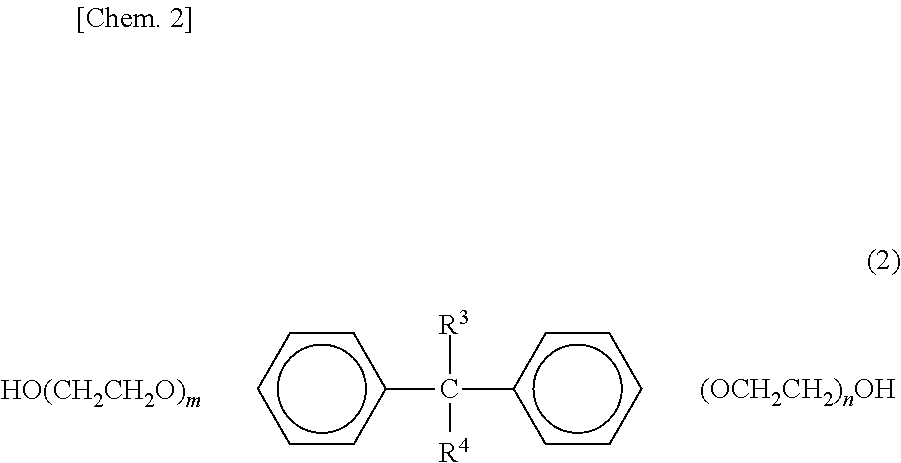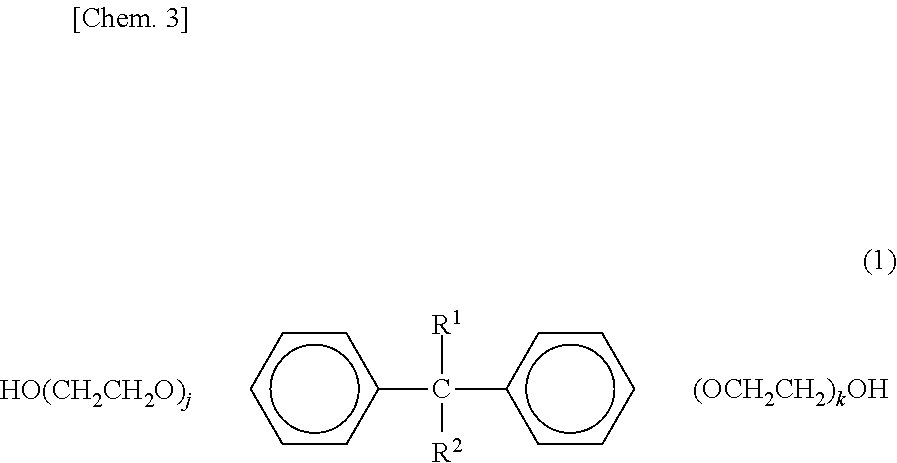Fiber-reinforced thermoplastic resin prepreg, molded body of same, and method for producing fiber-reinforced thermoplastic resin prepreg
a thermoplastic resin and fiber reinforcement technology, applied in the direction of synthetic resin layered products, chemistry apparatus and processes, layered products, etc., can solve the problems of insufficient follow-up capability of a product shape, low productivity, affecting the production efficiency of the product, etc., to improve specific strength and rigidity, excellent dynamic properties, excellent mechanical characteristics at industrial scal
- Summary
- Abstract
- Description
- Claims
- Application Information
AI Technical Summary
Benefits of technology
Problems solved by technology
Method used
Image
Examples
preparation example 1
Sizing Solution A
[0166]By using a mixer (manufactured by Tokushu Kika Kogyo Co., Ltd., trade name: HIVIS DISPER MIX, homo mixer mode: mode 3D-5 type), a sizing solution was prepared by reverse phase emulsion method in the following order.
[0167]A mixture containing 40 parts by mass of epoxy resin jER (registered trade mark) 828 (trade name, manufactured by Japan Epoxy Resins Co., Ltd.), 40 parts by mass or epoxy resin jER (registered trade mark) 1001 (trade name, manufactured by Japan Epoxy Resins Co., Ltd.), and 20 parts by mass of non-ionic surfactant Pluronic F88 (trade name, manufactured by BASF) was kneaded and mixed at 90° C. by using a planetary mixer and a homo mixer to obtain the resin composition (II) (sizing agent). Next, de-ionized water was added dropwise by a small amount to the resin composition (II), and after passing the reverse phase point, the amount for dropwise addition was increased. Finally, the sizing solution A with resin composition concentration of 40% by m...
preparation example 2
Sizing Solution B
[0168]A mixture of 50 parts by mass of bisphenol A ethylene oxide 60 mole adduct (manufactured by Matsumoto Yushi-Seiyaku Co., Ltd.) and 50 parts by mass of bisphenol A ethylene oxide 30 mole adduct (manufactured by Matsumoto Yushi-Seiyaku Co., Ltd.) was added to de-ionized water and stirred therein. Finally, the sizing solution B with resin composition concentration of 70% by mass was obtained.
preparation example 3
Sizing Solution C
[0169]The component (A2), the component (B2), the component (C2), and other components of the following type and amount were kneaded and mixed at 80 to 100° C. by using a planetary mixer and a homo mixer. After that, the temperature was lowered to 80° C. while maintaining the kneading and an aqueous solution of the component (D) was added by a small amount thereto. The viscosity of the content gradually increased during this step. After adding the entire amount of an aqueous solution of the component (D), the temperature was lowered for 10 minutes to 60° C. under sufficient kneading. Next, de-ionized water was added dropwise by a small amount thereto, and after passing the reverse phase point, the amount for dropwise addition was increased. Finally, an aqueous dispersion of the sizing solution C with effective component content of 40% by mass or so was obtained.
[0170](A2) Bisphenol A epoxy resin with one end modified by acryl (35 parts by mass) (EP828 base) manufact...
PUM
| Property | Measurement | Unit |
|---|---|---|
| pressure | aaaaa | aaaaa |
| melting point | aaaaa | aaaaa |
| melting point | aaaaa | aaaaa |
Abstract
Description
Claims
Application Information
 Login to view more
Login to view more - R&D Engineer
- R&D Manager
- IP Professional
- Industry Leading Data Capabilities
- Powerful AI technology
- Patent DNA Extraction
Browse by: Latest US Patents, China's latest patents, Technical Efficacy Thesaurus, Application Domain, Technology Topic.
© 2024 PatSnap. All rights reserved.Legal|Privacy policy|Modern Slavery Act Transparency Statement|Sitemap



